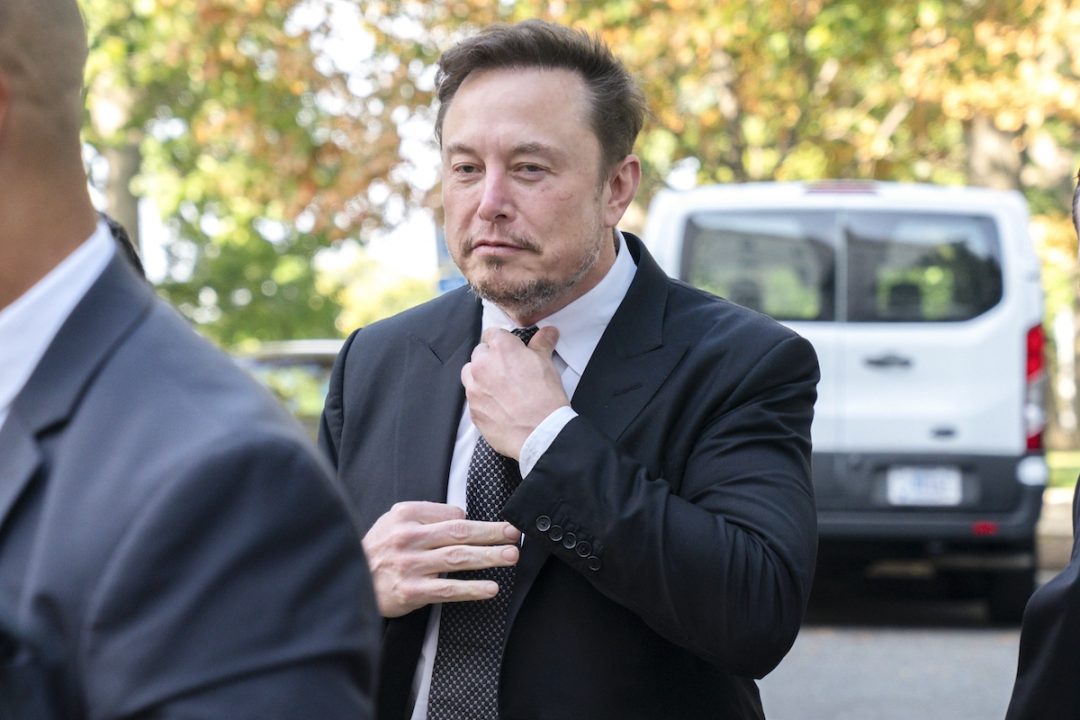
Elon Musk is stepping away from his role at the Department of Government Efficiency (DOGE). But the technocratic system he helped construct is only gaining momentum.
On Wednesday night, Musk thanked President Donald Trump for “the opportunity to reduce wasteful spending,” and added that “DOGE’s mission will only strengthen over time as it becomes a way of life throughout the government.”
Indeed, beneath the early theatrics — silly memes, chain saws, and talk of rooting out fraud — the true mission of DOGE was clear: modernize the federal government by embedding artificial intelligence (AI) into its core functions. And in that regard, Musk succeeded.
As Wired noted:
Elon Musk says he’s stepped down from his government duties, and it may seem as though the worst excesses of DOGE have passed. The reality is, the whole government is DOGE now.
DOGE failed to cut “at least” $2 trillion from the federal government budget. It didn’t shrink the state or reform its bureaucracy in a meaningful way by returning the power to the states. But that was never the point. What Musk actually built is more enduring: a centralized, AI-accessible data grid pulling from the Treasury, IRS, Social Security Administration (SSA), Health and Human Services (HHS), and more. Fraud prevention was the pitch. The real goal was to make government databases “talk to each other” — and feed them to private AI. In particular, Musk’s own Grok.
Such a system doesn’t fade. It consolidates power. And in the wrong hands, it lays the foundation for a digital regime that profiles, scores, and excludes without transparency or recourse.
The Bait: Smaller Government, Big AI
DOGE didn’t launch with AI headlines. It launched with the promise of smaller government.
Many conservatives and libertarians fell for it — eager to believe this was finally the tool to gut the administrative state. They applauded what they thought was a return to limited government, cheering Trump’s pitch of DOGE as “the Manhattan Project of our time.” Entire departments would be eliminated. Bureaucratic waste would be obliterated. At last, the machine would be dismantled.
Instead, it was reprogrammed.
When the actual executive order establishing DOGE dropped, with its vague pledge to “modernize federal technology,” even some supporters paused. But by then, the trap had sprung. The language of the order was dry, the headlines louder, and the machinery had already started moving.
While the public fixated on old scandals — unconstitutional spending, bloated contracts, DEI programs, and climate change grants — the real operation kicked in: automation, optimization, and data centralization under AI. The promise was smaller government. The outcome was something far more permanent.
As The New American reported at that time, DOGE followed the “AI first” agenda. It began automating workflows, decision-making, and administrative processes, starting with the General Services Administration and spreading across the executive branch. Each agency was ordered to stand up a DOGE team to “optimize” itself — audits, data mapping, AI integration.
Few in Congress objected. Republicans, The Hill reported, were warned they would “pay a political price” if they resisted Trump’s agenda or Musk’s restructuring. Musk had pledged to “play a significant role in primaries” and was compiling a “naughty list” of noncompliant lawmakers. No one wanted to be on it.
Pushback
Democrats raised formal concerns about DOGE’s scope, data access, and Musk’s conflicts of interest. Rep. Gerry Connolly (D-Va.) led inquiries into whether Musk or DOGE staffers held financial stakes in companies positioned to benefit from federal cuts — including Intuit and JPMorgan Chase. They warned about unregulated AI inside federal systems and potential violations of the Privacy Act.
The White House ignored them. Republicans dismissed the concerns as partisan obstruction. The media, still hypnotized by Musk’s stunts, mostly looked away.
But legal challenges followed.
Fourteen Democratic attorneys general sued, arguing that DOGE and Musk unlawfully accessed federal data and terminated employees without authority. A judge let the case proceed. A watchdog group, Citizens for Responsibility and Ethics in Washington, won a ruling subjecting DOGE to Freedom of Information Act requests — though it was stalled last week by the Supreme Court. A separate class action alleges DOGE illegally collected personal data, including Social Security and tax records.
The message is clear: DOGE is not just sidestepping Congress. It may have sidestepped the law.
Centralization as Byproduct
At the heart of DOGE’s mission was one goal: connect the disconnected.
In a Fox News appearance in March, Musk defended the centralization. “We have to fix the computers,” he said. “If the computers can’t talk to each other, you can’t get research done. If the computers can’t stay online, people won’t receive their Social Security.”
He wasn’t wrong. Much of the federal system still runs on infrastructure built decades ago. The IRS uses 1960s-era code. HHS and SSA platforms fail under pressure. The dysfunction is real.
But Musk’s fix wasn’t just about stability. It was about visibility. DOGE forced agencies to sync their databases — fusing once-siloed systems and making them accessible to private AI. The justification was efficiency. The result was something else entirely: a living, breathing infrastructure capable of identifying, tracking, and profiling every American in real time.
Even if Musk’s team had the noblest of intentions, the system they built can be weaponized with a single click.
The Grid That Watches
AI-driven rewriting of government data is part of what Catherine Austin Fitts and other sober observers describe as a digital control grid that, once operational, will erase individual liberty.
In her April report, Fitts warned that the Trump administration is now finalizing the rest of the architecture: REAL ID and biometrics, programmable money, and interoperable financial platforms — banks, credit cards, digital wallets — all designed to integrate seamlessly with social scoring and surveillance systems.
One of the most advanced nodes is inside the Department of Health and Human Services. Branded as a project to “study autism” and other chronic illnesses, HHS is building an AI-powered platform to centralize data from Medicare, Medicaid, and private sources: electronic health records, genomics, wearables, and pharmacy data.
Such a system could anchor what’s known as the Internet of Bodies — a surveillance framework that converts human biology into a continuous data stream. According to the World Economic Forum (WEF), the IoB is “a network of human bodies” connected by sensors, producing “tremendous amounts of biometric and behavioral data.”
The implications are clear: The body itself becomes a data node inside the control grid.
And once these systems are live and linked — ID, currency, health, AI — outright coercion is no longer required. The grid enforces itself. Exclusion does the rest.
Conservatives Saw It Coming. Why Look Away Now?
Ironically, it was conservatives and Trump supporters who once sounded the clearest alarms about technocracy. They warned of the UN’s digital governance push and exposed the WEF’s agenda — centralized control through AI, biometrics, digital money, and constant surveillance. They spoke out against the Fourth Industrial Revolution, in which the merging of digital systems with biological and financial identity would usher in a new era of social control.
And they were right. But now, under Trump, those same mechanisms are being assembled domestically — wrapped in flags, branded with populist slogans, and pitched as government reform.
The aesthetics changed. The architecture did not.
AI-driven centralization of government operations and databases is in motion — and its levers no longer require Elon Musk.
Related:
From Manhattan Project to IT Upgrade: DOGE and the Federal Overhaul That Wasn’t
Reprogramming the Republic: Musk’s Quiet AI Takeover of Federal Power
Trump Gives DOGE Expanded Oversight of Federal Contracts
AI and the Federal Purse: Musk’s Reforms of Treasury Oversight
DOGE at the Pentagon: The Business of More “Efficient” Wars
DOGE Expands AI-driven Automation of Government
Musk’s “Advisory” Role in “Optimizing” Government
FDA Deploying AI to Accelerate Drug Approvals
HHS Assembles National Health Data Platform and Autism Registry
HHS to Use Medicare and Medicaid Data in Federal Autism Platform





